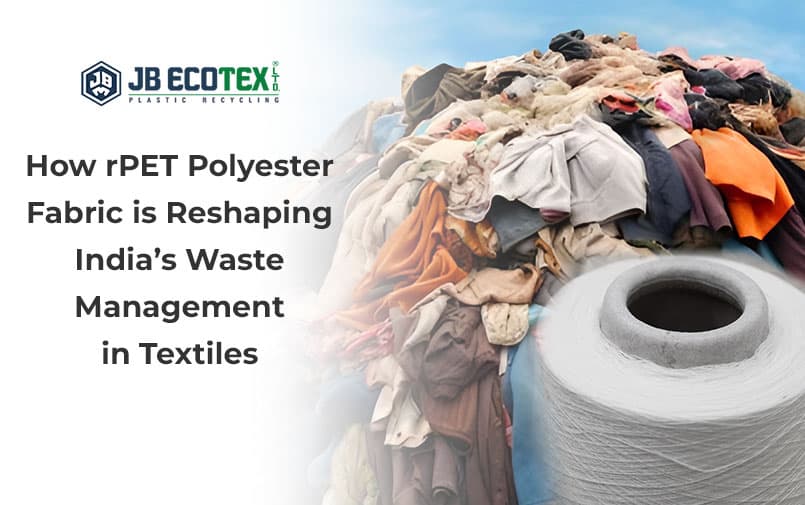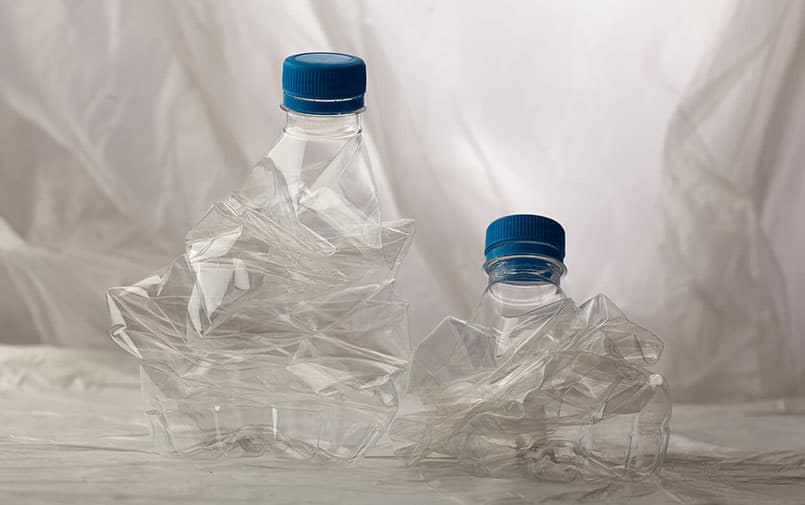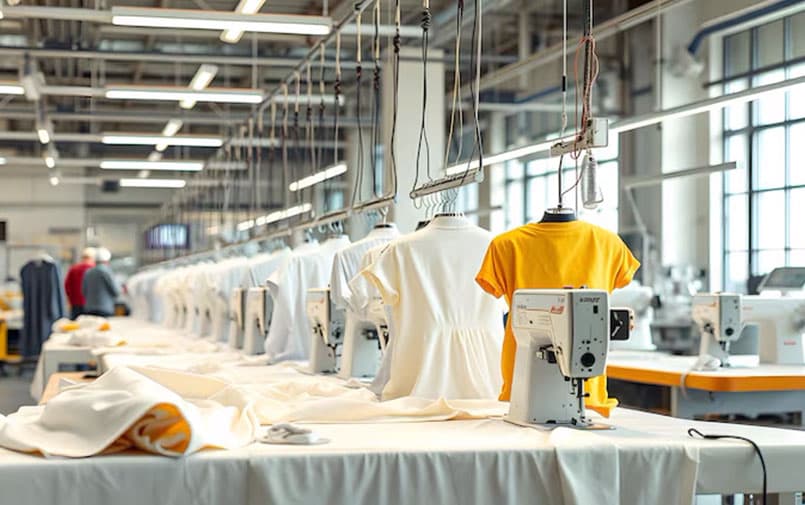How rPET Polyester Fabric is Reshaping India’s Waste Management in Textiles

Introduction to rPET Fabric
So many of us have tossed out a plastic bottle without giving it a second thought, only for it to resurface in the market as part of a trendy garment months later. Yes, the plastic bottle you discarded may now be your newest T-shirt or a pair of stylish sneakers.
Every week, India generates thousands of tons of plastic waste. Most of it ends up in overburdened landfills, burned in open spaces, or washed into rivers and oceans. A growing part of it, though, is quietly being given a second life, not in bottles or containers, but in clothes. From sleek jackets to soft bedding, from sportswear to backpacks, a surprising portion of what we wear today starts life as discarded plastic.
This isn’t a fashion trend or marketing gimmick. It’s a necessary shift, and rPET polyester fabric is at the centre of it. Due to booming textile demand and an ever-expanding plastic waste problem, this recycled material is emerging as both a practical solution and a symbol of smarter manufacturing. The link between waste management fabric efforts and textile innovation is growing stronger, and it’s reshaping how India views both sustainability and style.
The timing couldn’t be more relevant. With environmental policies tightening worldwide and consumer expectations rising, there are many changes taking shape. rPET polyester fabric is one of those quiet revolutions, less flashy than runway looks, but far more impactful in shaping a future that aligns progress with responsibility.
Welcome to the world where fabric doesn’t just cover us, it helps clean up the mess we’ve made.

India’s Plastic Waste Challenge
India's waste crisis is not news; bustling cities struggle daily under mountains of plastic waste, threatening both the environment and public health. However, amid these challenging circumstances, the emergence of rPET polyester fabric is shining a hopeful light, creating a bridge between the pressing issue of plastic waste and the dynamic world of fashion and textiles.
What is rPET Polyester Fabric?
At its core, rPET polyester fabric (Recycled Polyethylene Terephthalate) is made by processing discarded PET bottles into eco-friendly staple fibre. These fibres are then spun into recycled polyester spun yarn, breathing new life into what would otherwise clog landfills and waterways. This innovative textile addresses mounting plastic waste problem while simultaneously offering fashion brands a sustainable alternative to traditional fabrics.
Global and Indian Market Trends
Globally, the push towards sustainability is evident, with many brands shifting from virgin polyester fibre to more environmentally responsible choices. Leveraging recycled polyester staple fibre (RPSF fiber) has become important.
Key Players in India’s rPET Industry
RPSF manufacturers in India have risen to meet this challenge. Companies like Reliance Industries and JB Ecotex are actively involved, producing virgin-like recycled staple fibre that matches traditional polyester in quality and durability. Recycled PSF fibre suppliers across India are increasingly preferred by fashion brands seeking sustainable credentials without compromising fabric performance or aesthetics.
Versatility of rPET Polyester Fabric
One notable advantage of rPET polyester fabric is its versatility. Beyond apparel, it finds applications in home furnishings, automotive interiors, and industrial textiles. Dyeable polyester fibre ensures fashion designers aren’t restricted creatively. Vibrant colours and patterns are achievable, making sustainable fashion attractive.
From Bottle to Garment: The Process
But how exactly does the journey from a discarded bottle to fashionable attire unfold?
It starts with waste collectors sourcing post-consumer staple fibre, often gathered from community recycling drives and waste segregation initiatives. Bottles are cleaned, shredded into small flakes, and rigorously washed again to remove impurities. This step is critical because even minor contamination can compromise the final product.
These flakes undergo melting and spinning, creating thin strands of recycled polyester staple fiber. The material is then processed into yarn through a technique known as recycled polyester spun yarn spinning, ultimately woven or knitted into the rPET polyester fabric that graces store shelves.

Environmental Benefits
Brands using rPET polyester fabric frequently highlight its eco-friendly narrative, as consumers increasingly demand transparency in sourcing and production. Unlike virgin polyester fiber, which relies heavily on petroleum-derived raw materials and significant energy consumption, recycled PSF reduces environmental impact significantly, often consuming 50-60% less energy and emitting fewer greenhouse gases.
Quality and Consumer Perceptions
Despite clear environmental benefits, some consumers remain skeptical, often assuming recycled materials are inferior in quality. However, innovations in technology and stringent quality controls by reputable RPSF manufacturers in India have resulted in recycled fibres that often surpass conventional textiles in durability and comfort.
Moreover, unlike typical polyester products, rPET staple fibre presents minimal risk of microplastic pollution when handled correctly, thanks to meticulous processing standards. The increasing scale of operations among recycled PSF fibre suppliers in India also contributes to bringing down costs, making sustainable fashion accessible and affordable.
Government and Industry Initiatives
India's government has recognized the potential of rPET polyester fabric, encouraging initiatives and partnerships between municipal bodies, manufacturers, and fashion industry leaders. Cities like Surat and Tirupur have emerged as sustainable textile hubs, significantly contributing to reducing plastic waste through textile innovation.

Real-Time Scenario: G20, Startups, and Innovation
During the G20 Summit in India, several sustainability-focused startups in the textile sector showcased innovations using rPET staple fibre. These startups presented circular economy models, where waste management fabric practices intersected directly with fashion innovation. A few Indian manufacturers also highlighted collaborations with global apparel brands seeking RPSF manufacturers in India for large-scale production.
In addition, recent data from the Ministry of Textiles shows a steady increase in the domestic use of recycled polyester staple fiber, indicating a growing preference among local garment makers. Exporters, too, are adapting to the demand for post-consumer staple fibre, as overseas markets introduce stricter import standards for sustainably sourced polyester fabric plastic alternatives.
How Brands are Integrating Waste Management Fabric Solutions
Several Indian brands are now launching collections made entirely from recycled polyester spun yarn. These initiatives are not only a statement of values but are also supported by consumer demand for eco-friendly staple fibre solutions. Labels are moving beyond token s ustainability claims, investing in processes that prioritize dyeable polyester fibre and traceability across the supply chain.
Brands in the lifestyle and home textile segment are also embracing rPET polyester fabric, working with recycled PSF fibre suppliers to integrate circular practices. The use of rPET polyester fabric supports long-term goals in reducing reliance on virgin polyester fiber and transitioning to recycled alternatives at scale.

The Future of Sustainable Fashion in India
The global fashion landscape is evolving, with conscious consumerism at its core. Brands can no longer ignore the environmental footprint of their products.
The narrative around waste management fabric in India is changing. The adoption of rPET polyester fabric represents more than just a recycling initiative. It is a strategic, sustainable solution deeply woven into the country's textile industry's future. By choosing products made from recycled polyester staple fiber, consumers contribute directly to environmental conservation and economic vitality, proving fashion can indeed be both stylish and sustainable.
So, next time you hold a plastic bottle, consider its potential. It is not merely waste but an opportunity waiting to be spun into something beautiful and useful.
